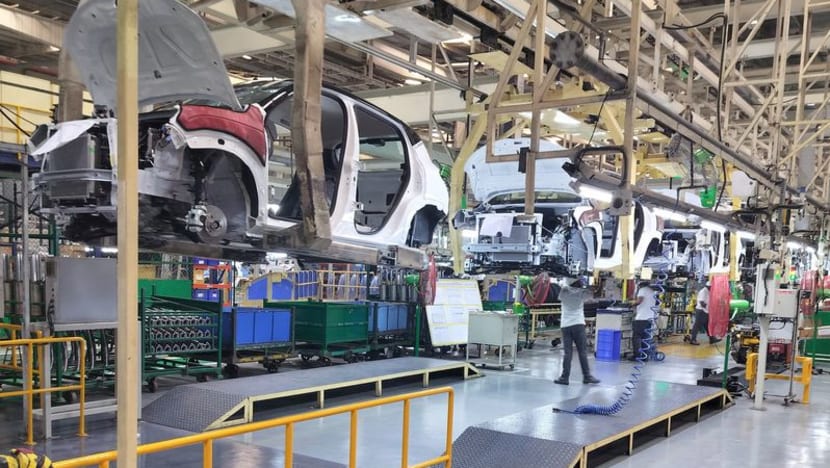Trump says reciprocal tariffs will be announced Thursday

Employees assemble parts onto car panels at an assembly line inside the manufacturing plant of Renault Nissan Automotive India in Oragadam in the southern state of Tamil Nadu, India, Mar 27, 2024. (Photo: REUTERS/ Praveen Paramasivam)
WASHINGTON: President Donald Trump announced that he would impose "reciprocal tariffs" on US trading partners on Thursday (Feb 13), opening new fronts in a trade war.
"Three great weeks, perhaps the best ever, but today is the big one: reciprocal tariffs!!! Make America great again!!!" Trump said in a post in all capital letters on his Truth Social platform.
The move would match the United States' tariff rates on imports to the levels that other countries impose on US goods.
Analysts have warned that reciprocal duties could bring a broad tariff hike to emerging market economies such as India and Thailand, which tend to have higher effective tariff rates on US goods.
Countries that have trade deals with Washington such as South Korea are less at risk from this move, analysts believe.
During election campaigning, Trump promised: "An eye for an eye, a tariff for a tariff, same exact amount."
For example, if India imposes a 25 per cent tariff on US autos, Washington will have a 25 per cent tariff as well on imports of autos from India, explained a Nomura report this week.
"Trump's objective of implementing reciprocal tariffs is to ensure fair treatment for US exports, which could indirectly also address US trade imbalances with partner countries," analysts at Nomura said.
Among Asian economies, India has a 9.5 per cent weighted average effective tariff on US exports, while there is a three-percent rate on India's exports to the United States.
Thailand has a 6.2 per cent rate and China a 7.1 per cent rate on US products.
But higher tariffs are also often imposed by poorer countries, who use them as a tool for revenue and protection because they have fewer resources to impose non-tariff barriers such as regulatory protectionism, Cato Institute vice president of general economics Scott Lincicome earlier told AFP.
It remains unclear if Trump views reciprocal tariffs as an alternative to a universal tariff of between 10 and 20 per cent, which he floated in the lead-up to last year's US presidential election, or as a separate policy.















